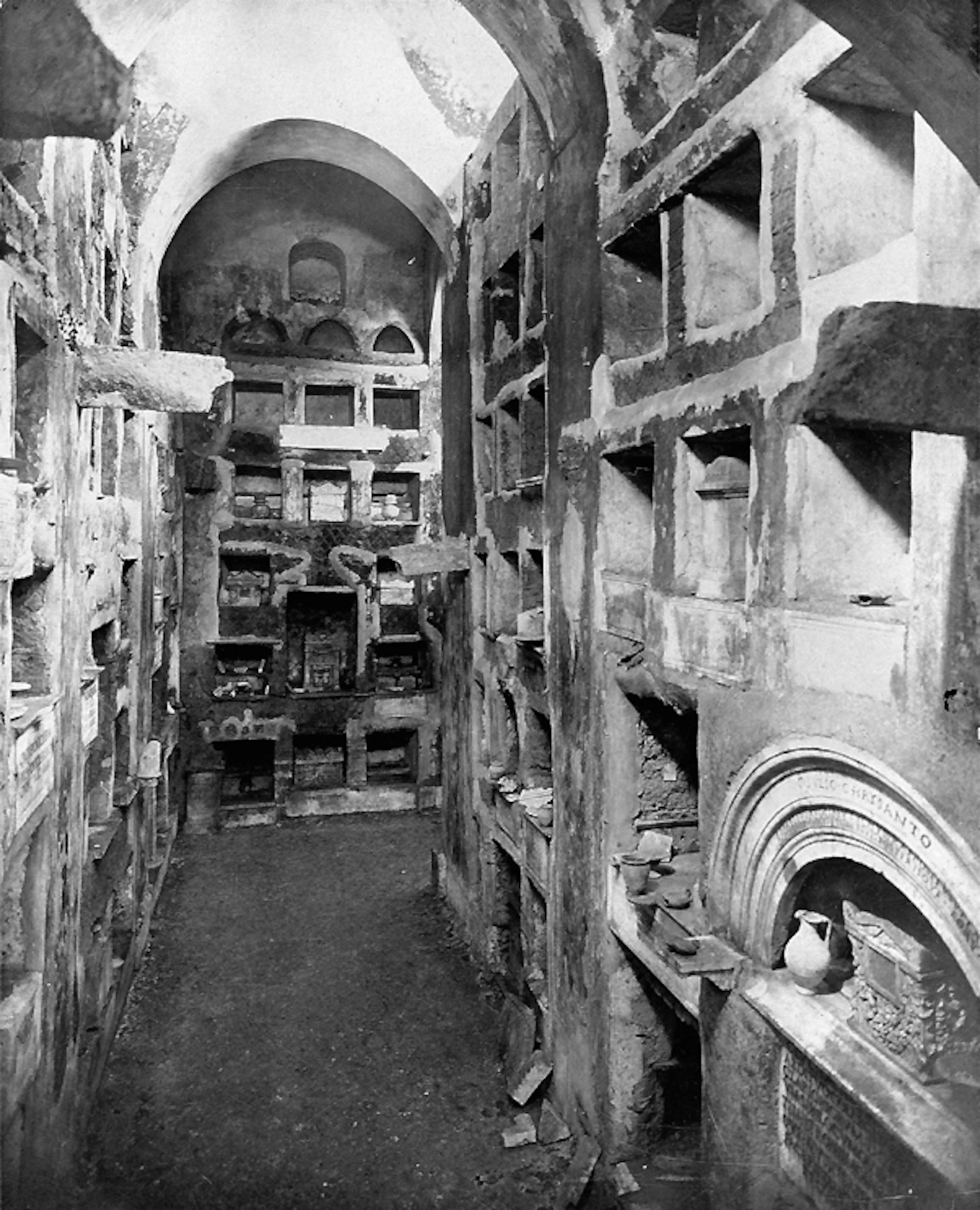A cross inlaid in the floor of a library marks the spot where Indiana Jones has to dig to access the ancient catacombs of Venice in the film Indiana Jones and the Last Crusade. The catacombs, a network of dark and narrow underground tunnels and tombs, hold the secret that eventually leads Indy to the hideout of the Holy Grail.
Unfortunately, the dramatic scene is fictional.
"There are no catacombs in Venice, as the town rises on wood piles in the middle of the saltwater Venetian Lagoon. There is no room for underground chambers or passages, and only a few buildings have a basement," says Luigi Fozzati, head of the Archaeological Superintendence of Veneto.
In fact, Venice's cemetery is located on a small island outside the town, and the oldest tombs of nobles and heads of state lie aboveground in churches.
Rome, Capital of Catacombs
To find catacombs, go to Rome, home of some of the oldest and longest burial underground tunnels in the world. "Hundreds of kilometers of catacombs run underneath the town and its outskirts," says Adriano Morabito, president of the association Roma Sotterranea (Underground Rome).
"Some of the networks are well known and open to visitors, while others are still scarcely explored. Probably there are a number of lost catacombs, too."
The oldest tunnels date back to the first century. "The Jewish community in Rome built them as cemeteries. Christian catacombs came a century later. They were not secret meeting places to survive persecutions, as historians thought in the past, but burial tunnels, like the Jewish ones," Morabito explains. "They used to grow larger and larger around the tombs of saints because people asked to be buried near their religious leaders."
All Christian catacombs in Rome are property of the Catholic Church, and no one is allowed to explore them without special permission from the Vatican.
"It's not so easy to get the permission. That's one of the reasons there have been very few archaeological expeditions to less known tunnels in the last decades," Morabito says.
The Legend of the Holy Grail
The aura of mystery surrounding the catacombs has fed legends for centuries. Recently, Alfredo Barbagallo, an amateur archaeologist, claimed that the Holy Grail could be hidden in Rome, in the catacomb underneath the Basilica of San Lorenzo Fuori le Mura, near the tomb of St. Lawrence, a deacon martyred in A.D. 258.
According to a legend, Pope Sixtus II entrusted the Holy Grail to Lawrence to save it from the persecution of Emperor Valerian. The deacon put the chalice in a safe place—and perhaps even sent it to Spain—before being killed. Barbagallo thinks the Grail never left Rome and is currently buried in a tunnel under the basilica dedicated to St. Lawrence.
Vatican authorities denied permission to open the catacomb and look for the chalice.
"There isn't any solid evidence behind Barbagallo's claims," says Vincenzo Fiocchi Nicolai, rector of the Pontifical Institute of Christian Archaeology.
Adriano Morabito agrees.
"We don't expect any great discovery from Roman catacombs. Early Christians didn't bury objects with the dead. As for now, we have only found inscriptions and human remains."


















